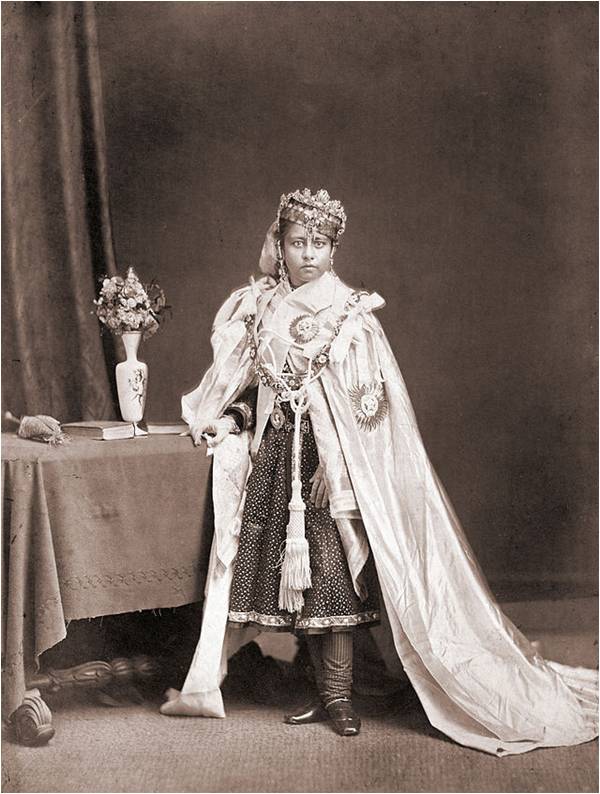
Full-length standing studio portrait of Shah Jahan Begum of Bhopal from the ‘Lee-Warner Collection: ‘Bombay Presidency. William Lee Warner CS’ taken by Bourne and Shepherd c1872.
Bhopal, Madhya Pradesh, was founded in the 11th century by Raja Bhoj of the Paramara dynasty. By the 18th century, it was ruled by the descendants of the Afghan Dost Muhammad Khan. Bhopal was unique among the princely states as it was ruled by a succession of widows; Begum Shah Jahan (1838-1901) succeeded as Nawab Begum twice, the first time between 1844-1860 and the second time between 1868-1901. Shah Jahan Begum was known for commencing the construction of the Taj-ul-Masjid mosque in Bhopal and for other public work projects such as subsidising the cost of a railway to be constructed between Hoshangabad and Bhopal. In 1872 she was created a Grand commander of the Most Exalted Order of the Star of India. This portrait appears in JT Wheeler’s History of the Imperial Assemblage at Delhi (London,1877).
Bhopal, Madhya Pradesh, was founded in the 11th century by Raja Bhoj of the Paramara dynasty. By the 18th century, it was ruled by the descendants of the Afghan Dost Muhammad Khan. Bhopal was unique among the princely states as it was ruled by a succession of widows; Begum Shah Jahan (1838-1901) succeeded as Nawab Begum twice, the first time between 1844-1860 and the second time between 1868-1901. Shah Jahan Begum was known for commencing the construction of the Taj-ul-Masjid mosque in Bhopal and for other public work projects such as subsidising the cost of a railway to be constructed between Hoshangabad and Bhopal. In 1872 she was created a Grand commander of the Most Exalted Order of the Star of India. This portrait appears in JT Wheeler’s History of the Imperial Assemblage at Delhi (London,1877).
– Courtesy British Library

